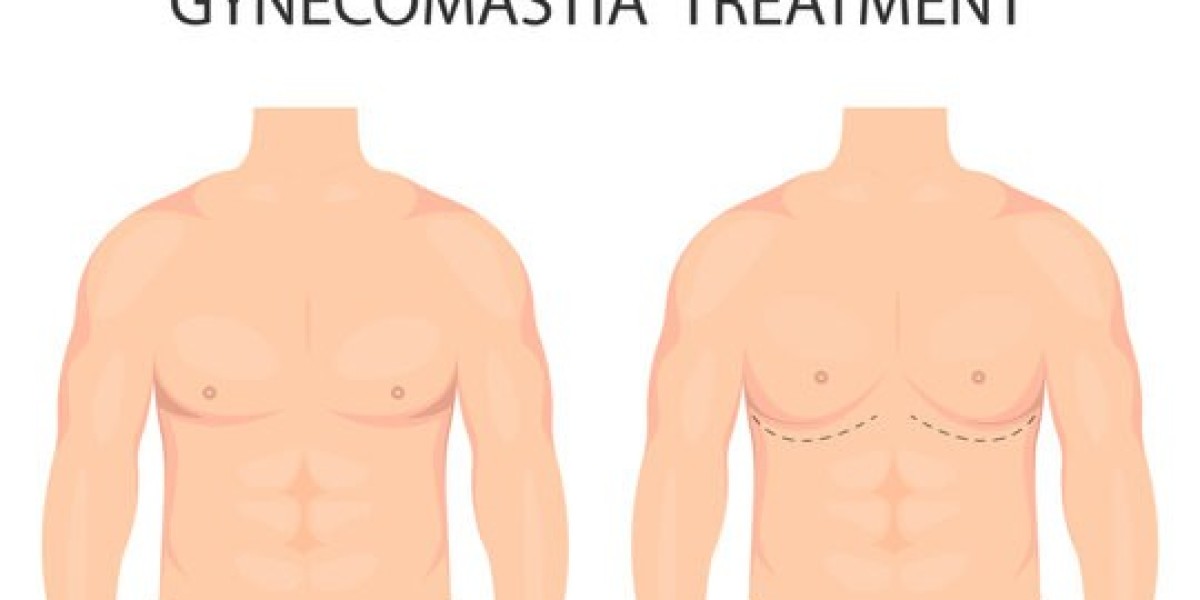Gynecomastia, the abnormal enlargement of male breast tissue, is a common concern for many men in Islamabad and across the globe. While traditional surgical methods have been effective, recent advancements in minimally invasive techniques have revolutionized how gynecomastia is treated. These techniques aim to reduce recovery time, minimize scarring, and provide natural-looking results, making them increasingly popular among patients and surgeons in Islamabad. Gynecomastia surgery in Islamabad offers a safe and effective solution for men seeking to reduce excess chest tissue and restore a more masculine appearance.
This article explores the minimally invasive gynecomastia surgery techniques commonly used in Islamabad, their benefits, and what patients can expect during the procedure and recovery.
Understanding Minimally Invasive Gynecomastia Surgery
Minimally invasive surgery (MIS) refers to techniques that require smaller incisions and cause less trauma to the surrounding tissues compared to conventional open surgery. In gynecomastia treatment, MIS focuses on removing excess fatty and glandular tissue while preserving the skin and nipple complex with minimal scarring and quicker healing.
The goal is to achieve a flatter, firmer, and more masculine chest contour without the extensive downtime or visible scars often associated with traditional surgery.
Common Minimally Invasive Techniques in Islamabad
Liposuction
Liposuction is the most widely used minimally invasive method for treating gynecomastia, especially when the enlargement is predominantly due to fatty tissue. In this procedure, the surgeon makes small incisions, typically hidden around the edges of the areola or in the natural folds under the arm.
Through these incisions, a thin cannula (a hollow tube) is inserted to suction out excess fat. Several types of liposuction technology may be used:
Tumescent Liposuction: The area is infiltrated with a solution containing saline, local anesthetic, and adrenaline to reduce bleeding and make fat easier to remove.
Ultrasound-Assisted Liposuction (UAL): Uses ultrasonic energy to liquefy fat before suctioning, making it ideal for denser tissues.
Power-Assisted Liposuction (PAL): The cannula vibrates rapidly to break up fat cells more efficiently.
Laser-Assisted Liposuction (LAL): Laser energy melts fat and tightens skin simultaneously.
Liposuction is typically an outpatient procedure, performed under local or general anesthesia. It results in minimal scarring and allows patients to resume daily activities within days.
2. Endoscopic Gynecomastia Surgery
Endoscopic surgery is a relatively newer technique employed in Islamabad clinics for cases where glandular tissue removal is necessary but a minimally invasive approach is preferred. This technique involves:
Making very small incisions, often hidden in the armpit area.
Inserting an endoscope—a thin tube with a camera and light—to visualize the breast tissue.
Using specialized instruments to excise glandular tissue under direct vision.
The key advantage is precise removal of glandular tissue with minimal damage to surrounding structures, reduced scarring, and faster recovery. This technique is especially useful for moderate gynecomastia cases where liposuction alone is insufficient.
3. Vacuum-Assisted and Power-Assisted Techniques
Some clinics in Islamabad have adopted advanced vacuum-assisted or power-assisted tools that further reduce invasiveness. These devices enhance the surgeon’s ability to remove tissue uniformly while protecting the skin and other delicate structures.
Vacuum-assisted devices may be used in combination with liposuction, providing controlled fat and gland removal with less bruising and swelling.
4. Combination Techniques
In many cases, surgeons in Islamabad use a combination of minimally invasive techniques to optimize outcomes. For example, liposuction may be combined with small incisions for direct gland excision if fatty and glandular tissues both contribute to the breast enlargement.
This approach allows a tailored surgery with minimal incisions while ensuring comprehensive tissue removal.
Benefits of Minimally Invasive Techniques
Smaller Incisions and Reduced Scarring: Unlike traditional excisional surgery, which may require large cuts around the areola or on the chest, minimally invasive procedures involve tiny incisions, often hidden in natural creases.
Shorter Recovery Time: Patients typically experience less pain, swelling, and bruising, enabling them to return to normal activities, including work and light exercise, much sooner.
Less Risk of Complications: Reduced tissue trauma leads to lower risks of infection, hematoma, or seroma (fluid buildup).
Natural-Looking Results: By preserving skin and the nipple-areola complex, the chest maintains a more natural contour with less chance of deformities.
What to Expect During Surgery and Recovery in Islamabad
Pre-operative Consultation: Patients meet with a plastic surgeon to evaluate the severity of gynecomastia, review medical history, and discuss goals. Imaging or blood tests may be done.
Surgical Procedure: Depending on the technique, surgery lasts between 1 to 2 hours. Local anesthesia with sedation or general anesthesia may be used.
Post-Operative Care: After surgery, patients are often required to wear a compression garment for several weeks to support the new chest shape and reduce swelling.
Follow-Up: Surgeons in Islamabad typically schedule follow-up visits to monitor healing and address any concerns.
Suitability and Limitations
While minimally invasive techniques are highly effective, they may not be suitable for everyone. For example:
Patients with severe gynecomastia and excessive skin laxity may require skin excision, which is less minimally invasive.
Cases with significant fibrosis or previous surgeries may require more traditional open approaches.
Each patient’s anatomy and condition will influence the choice of technique.
Conclusion
Minimally invasive gynecomastia surgery techniques have transformed the treatment landscape in Islamabad, offering men a less painful, quicker, and cosmetically appealing solution to male breast enlargement. Liposuction, endoscopic surgery, and advanced suction-assisted methods provide safe and effective options tailored to the patient’s specific needs.






